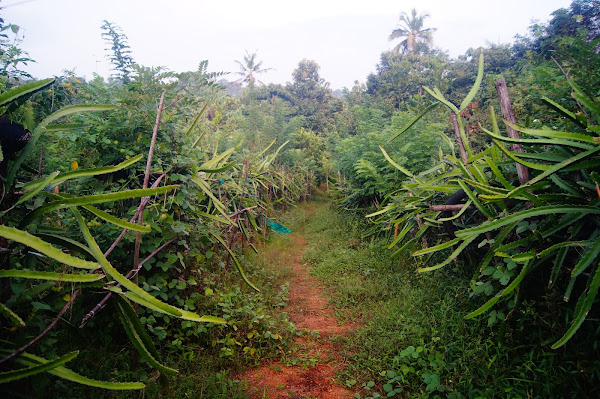Sweet potato cultivation tips from our forest-farm !
A Sweet Potato Tale from Liz Pepper Gardens Forest-Farm
Beyond the sweet potato harvest, the tale takes a flavorful turn as we explore the creation of a delectable chili chutney, featuring homegrown chilies from the forest-farm. Along the way, we'll also share valuable insights and tips for successful sweet potato cultivation.
The Planting Process:
Our sweet potato cultivation journey began with the careful planting of saplings across the diverse landscape of Liz Pepper Gardens Forest-Farm. The chosen plot, strategically interspersed with these saplings, soon transformed into a vibrant sea of sweet potato vines. This method not only maximized space but also embraced the principles of sustainable and eco-friendly farming.
Cultivating Bounty:
As the weeks passed, the once modest saplings flourished into a hearty sweet potato harvest. The forest-farm's unique ecosystem, enriched by organic practices, contributed to the robust growth of these tubers. The satisfaction of harvesting sweet potatoes that were not only homegrown but also nurtured by the forest-farm's ecosystem was unparalleled.
Chilli Chutney Delight:
Inspired by the spicy offerings of the forest-farm, we ventured into crafting a chili chutney using the very chilies grown on-site. The combination of freshly harvested sweet potatoes and homegrown chilies resulted in a flavorful and unique culinary creation. The chili chutney, a delightful marriage of sweetness and spice, has become a staple on our table, showcasing the delicious synergy between the forest-farm's produce.
Tips for Successful Sweet Potato Cultivation:
Selecting Varieties: Choose sweet potato varieties suitable for your climate and soil conditions. Varieties like Beauregard and Covington are popular for their adaptability.
Planting Techniques: Opt for vine cuttings or slips for planting. Ensure a warm and well-drained soil, and space the plants adequately for optimum growth.
Soil Enrichment: Sweet potatoes thrive in nutrient-rich soil. Prior to planting, amend the soil with organic matter to enhance fertility.
Watering Practices: Maintain consistent moisture levels, especially during the initial stages of growth. However, avoid waterlogged conditions, as sweet potatoes prefer well-drained soil.
Sunlight Requirements: Plant sweet potatoes in a location that receives full sunlight, as they require ample sunlight for proper development.
Pest Management: Regularly inspect plants for pests, and consider natural methods such as companion planting or neem oil to deter pests organically.
We steam the sweet potatoes, and pair it with raw green chilli chutney to have , often like a mid evening tea time snack.
And they grow in abundance on our farm both chillies and potatoes.
The root system of sweet potatoes showcases an impressive adaptability to various soil types. From loose, sandy soils to more compact clays, these versatile roots navigate their subterranean realm with resilience. This adaptability not only enhances their ability to flourish in diverse environments but also makes them a reliable crop for various regions worldwide.
As you embark on your sweet potato cultivation venture, may these insights and tips guide you towards a fruitful harvest and a flavorful culinary experience. Happy farming!
Also read





Comments
Post a Comment